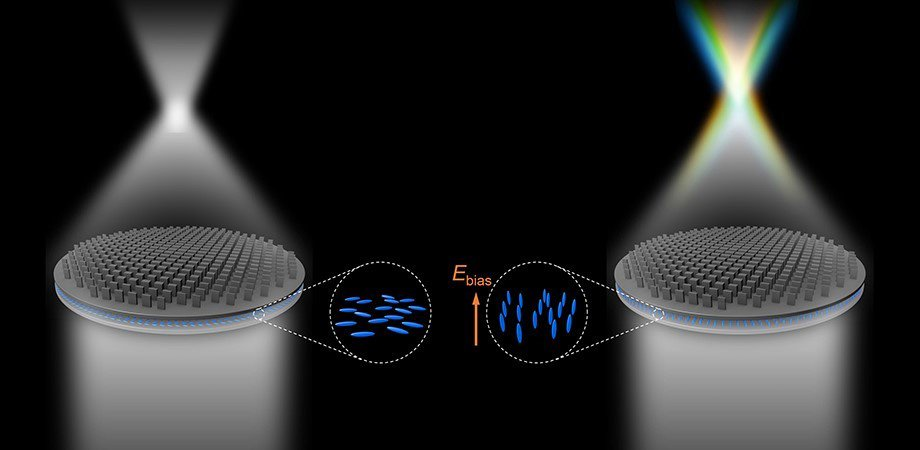Jul 7 2020
With the advent of metasurfaces, a new door has opened for the advancement of planar optics. Of the several metadevices, the metalens has gained extensive attention for practical applications in spectroscopy and imaging, where it enables multifunctional wavefront manipulations for enhanced focus.
 Liquid crystal integrated metalens. Image Credit: Zhixiong Shen et al., Nanjing University.
Liquid crystal integrated metalens. Image Credit: Zhixiong Shen et al., Nanjing University.
To achieve integration and miniaturization of photonic systems, conventional refractive lenses made of polymers or polished crystals are being replaced by metalenses. However, their functions continue to be static.
The potential of achieving active metalenses has encouraged the development of materials with unique properties such as discrete focal lengths or switchable bifocals. To date, dynamic manipulation of metalenses, particularly tunable chromatic dispersion, has been unachievable.
Dynamic Focusing with a Single Metalens
Metalenses are hampered by the disability to focus all colors to the same point, called chromatic aberration. Elimination of chromatic aberration is an important concern for achieving enhanced resolution in full-color and hyperspectral imaging. In contrast, for tomographic applications and spectrographic analysis, chromatic dispersion helps isolate focal spots for various frequencies, to prevent crosstalk.
The capacity to dynamically control chromatic dispersion with an individual metalens would enhance functional versatility and system integration.
Photo-Patterned Liquid Crystal
At the Nanjing University, a research group recently achieved active manipulation of chromatic dispersion, realizing achromatic focusing within assigned broadband. As stated in the peer-reviewed, open-access journal Advanced Photonics, the researchers incorporated a photo-patterned liquid crystal into a dielectric metasurface.
In the researcher’s design, the metasurface produces a linear-resonant phase dispersion, which implies that the transmitted wave’s phase front is postponed linearly by the dielectric metasurface. The liquid crystal (LC) produces frequency-independent geometric phase modulation.
The researchers confirmed the chromatic aberration manipulation of the combined lens and illustrated a considerable dynamic broadband imaging contrast effect. The design can even be applied to other active metadevices. For instance, the researchers demonstrated a beam deflector with controllable dispersion.
Combining the flexibility of metadevices with the broadband electro-optical characteristics of liquid crystals makes the design competent for wavefront control from the visible wavelengths to the THz and microwaves.
Yanqing Lu, Study Senior Author and Professor, College of Engineering and Applied Sciences, Nanjing University
According to Prof. Wei Hu, who is Lu’s collaborator at the College of Engineering and Applied Sciences and fellow senior author, “We anticipate that liquid crystal integrated metadevices will give birth to a variety of active planar photonic elements to enhance the functional flexibility of optical systems.”
Journal Reference:
Shen, Z., et al. (2020) Liquid crystal integrated metalens with tunable chromatic aberration. Advanced Photonics. doi.org/10.1117/1.AP.2.3.036002.